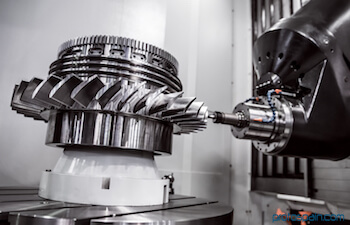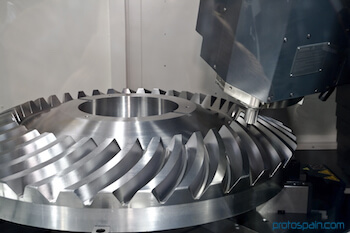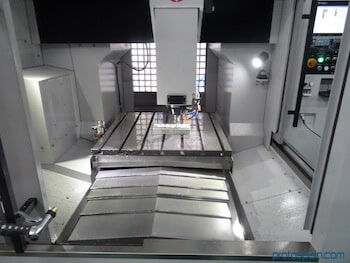Rapid prototyping with CNC machining
What is CNC machining?
Computer numerical control or CNC machining is an automated cutting process by turning and milling in which the material is removed from a stock unit by means of rotary cutting tools. In CNC milling the cutting tool moves in three or five axis to achieve the desired shape in the part. In CNC milling the cutting tool generally rotates around an axis that is perpendicular to the bench containing the material to be cut. At first sight, a miller looks like a drill. A cutting tool protrudes downward from the rotary head. The material stock is placed on a mobile bench below the blade. While the cutting tool rotates, a computer controls the vertical movement of the blade (Z axis) and the horizontal movement (X and Y axes) of the material stock. The cutter is guided to move through the material, removing portions from the workpiece to create shapes.



How do CNC milling machines work to make a prototype?
- The first step is to compile the 3D design of the part, information about the material to be used and the surface treatment that our client wants. Next, the programming department prepares the CNC program according to the 3D design.
- Once the CNC production department gets the programming, the raw material required by the customer is searched and entered into the machine, which works according to the program introduced. A technician supervises the whole process.
- After the CNC machining we obtain a preliminary part, on which our technicians work applying a process of cleaning and deburring.
- Once the prototype is clean and polished, the technicians inspect it again in case there is any fault.
- If the part is ok, it is sent to the paint department in order to apply the surface treatment requested by the client. If the part needs to be painted, the necessary Pantone® color is chosen.
- Once painted, it is sent to the Quality Assurance Department for 3D inspection. Once everything is checked and assessed, we send photos of the prototype to the client for final approval, as a previous step to the prototypes delivery.
What kind of materials can we process and what surface treatments do we apply?
We can perform rapid prototyping of rigid materials that include most part of metals: aluminum, stainless steel, copper, steel, brass, titanium, silver, bronze, etc., hard plastics and other materials: Nylon, Acetal, polycarbonate, polystyrene, acrylic, fiberglass, carbon fiber, PTFE, ABS, PVC, PMMA, PEEK, etc. For materials with a certain level of elasticity, we use silicone injection molding.
The surface treatments we apply are: painting, polishing, pad printing, anodizing, transparent surfaces, translucent surfaces, brushed, oil painted, electroplated.

